The tiny home movement represents a significant shift in contemporary residential preferences, driven by factors ranging from financial pragmatism to ecological consciousness. This trend, characterized by dwellings significantly smaller than conventional houses, has garnered substantial attention due to its potential for reduced living expenses and a diminished environmental footprint.
Consequently, individuals contemplating a transition to a tiny home must navigate a complex landscape of planning, legal considerations, and practical adjustments. This article provides a comprehensive overview of the tiny home phenomenon, outlining essential aspects for those considering this lifestyle.
Understanding the Tiny Home Movement
The concept of a tiny home extends beyond mere physical dimensions; it embodies a philosophical approach to living characterized by minimalism and resource efficiency. A tiny home is generally defined as a dwelling under 500 square feet, often designed with a focus on maximizing space utilization. Furthermore, these structures can be classified into those built on wheels (THOWs) and those anchored to permanent foundations, each presenting distinct advantages and regulatory implications.
The proliferation of the tiny home movement is attributable to socioeconomic and environmental factors. Firstly, the escalating costs of traditional housing have rendered homeownership increasingly unattainable for many, prompting a search for more affordable alternatives. Secondly, growing awareness of climate change and resource depletion has spurred a desire for sustainable living practices. Thirdly, the appeal of a debt-free lifestyle, coupled with the pursuit of financial independence, resonates strongly with individuals seeking to liberate themselves from conventional financial burdens.
Moreover, the diversity within the tiny home sector allows for a range of preferences and needs. DIY projects offer a cost-effective approach for those with construction skills, while professionally built homes provide turnkey solutions for those seeking convenience. Additionally, design variations, encompassing modern, rustic, and custom aesthetics, ensure that individuals can find a tiny home that aligns with their personal style.
Planning Your Tiny Home Journey
Embarking on a tiny home journey necessitates meticulous planning and a clear understanding of personal needs and objectives. Firstly, prospective tiny home dwellers must define their lifestyle requirements and assess the minimum space necessary for comfortable living. Subsequently, establishing a realistic budget and exploring financing options are crucial steps in the planning process. Moreover, selecting an appropriate location, considering climate and accessibility is paramount.
Secondly, designing a tiny home layout requires careful consideration of space optimization. Smart storage solutions, efficient appliances, and adequate natural light are essential components of a functional and comfortable tiny home. Furthermore, a well-conceived floor plan can enhance the livability of a small space.
Thirdly, budgeting and financing are critical aspects of the planning phase. Estimating construction costs, including materials and labor, is essential for accurate financial planning. Additionally, exploring various financing options, such as personal loans, savings, or alternative funding sources, can facilitate the realization of the tiny home dream. Consequently, one must also account for potential hidden costs, such as permitting fees and utility connections. Therefore:
- Accurate budgeting is crucial to avoid financial strain.
- Careful planning ensures the tiny home meets individual needs.
Legal and Regulatory Considerations
Navigating the legal landscape surrounding tiny homes requires a thorough understanding of zoning laws, building codes, and insurance requirements. Local zoning regulations dictate the permissible size and placement of dwellings and vary significantly across jurisdictions. Consequently, obtaining the necessary permits and adhering to building codes is essential for legal occupancy.
Also, insurance coverage for tiny homes can present unique challenges. Standard homeowner’s insurance policies may not adequately address the specific risks associated with tiny homes. Therefore, specialized insurance policies that cover the structure and its contents are necessary. Understanding liability issues related to construction and occupancy is crucial for risk management.
Furthermore, the availability of suitable parking or land for tiny homes is a significant consideration. Tiny home communities offer a communal living option, but they may have specific rules and regulations. Individuals may choose to purchase or rent land, which requires careful evaluation of zoning restrictions and access to utilities. Things to consider include:
- Zoning laws heavily influence where a tiny home can be placed.
- Insurance policies must be tailored to the unique risks of tiny homes.
Practical Aspects of Tiny Home Living
Transitioning to a tiny home necessitates significant lifestyle adjustments, particularly in downsizing and resource management. Firstly, decluttering and minimizing possessions is essential for creating a comfortable and organized living space. Strategies for efficient storage and organization are crucial for maximizing the limited space.
Secondly, utility management in tiny homes requires careful consideration of traditional and alternative energy sources. Connecting to conventional utilities may be feasible in some locations, while off-grid solutions, such as solar panels and water catchment systems, offer greater autonomy.
Thirdly, building a supportive community is essential for successful tiny home living. Online forums and local meetups provide opportunities to connect with other tiny home dwellers and share experiences. Moreover, addressing the social aspects of living in a small space, such as maintaining privacy and managing interpersonal relationships, is crucial for well-being.
Common Challenges and How to Overcome Them
Living in a tiny home presents unique challenges that require creative solutions and adaptability. Space limitations can be mitigated through innovative storage solutions, such as multi-functional furniture and vertical storage systems. Therefore, maximizing every available inch of space is essential for creating a comfortable living environment.
Additionally, weather and climate considerations necessitate careful planning and preparation. Insulation and climate control strategies are crucial for maintaining comfortable indoor temperatures in varying weather conditions. Moreover, preparing for extreme weather events, such as storms and floods, is essential for safety and security.
Also, social and emotional adjustments are integral to tiny home living. Maintaining healthy relationships and ensuring privacy in a small space requires effective communication and boundary setting. Furthermore, coping with feelings of isolation or claustrophobia may require proactive strategies, such as engaging in outdoor activities and maintaining social connections.
Closing Points
The tiny home movement represents a compelling alternative to conventional housing, offering the potential for financial savings, environmental sustainability, and a simplified lifestyle. However, a successful transition to a tiny home requires meticulous planning, a thorough understanding of legal and regulatory considerations, and a willingness to adapt to a smaller living space.
Prospective tiny home dwellers, therefore, should conduct thorough research and carefully evaluate their needs and preferences. The ongoing evolution of the tiny home movement suggests that it will continue to be a viable option for those seeking a more minimalist and sustainable way of life.
© 2025 xpertRealtyMarketing.


